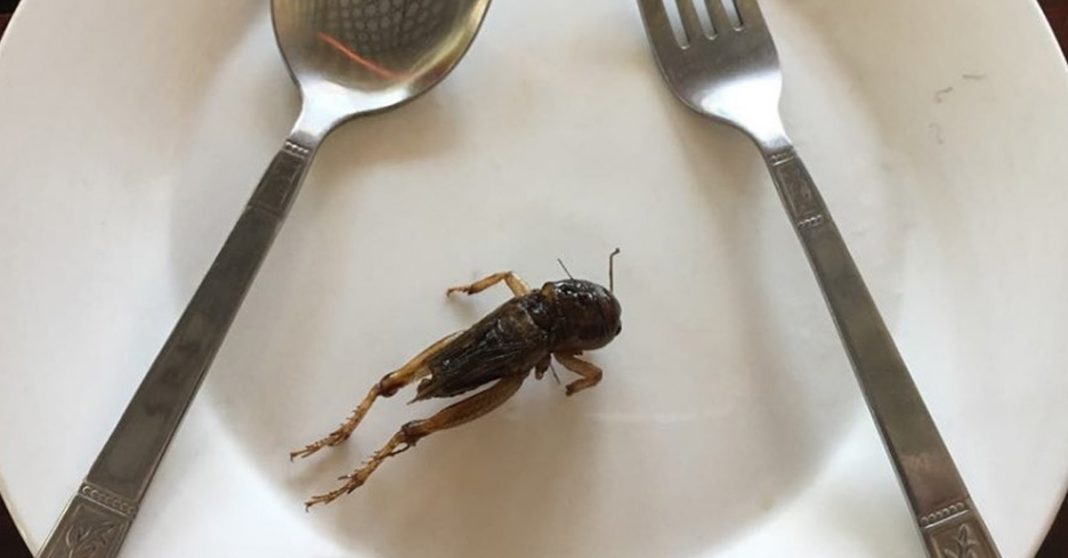Edible insects first sparked international attention in 2013 when the Food and Agriculture Organization (FAO) published a report referring to them as one way to solve the global food shortage.
At that time, FAO noted that insects as food and feed emerge as an especially relevant issue in the twenty-first century due to the rising cost of animal protein, food and feed insecurity, environmental pressures, and population growth.
The organization added, thus, alternative solutions to conventional livestock and feed sources urgently need to be found, adding that the consumption of insects could play such a role.
The European Union (EU) was among the first to respond. It designated in 2015 insects as “novel foods.” Accordingly, authorized insects began to be distributed and sold throughout the EU.
Many businesses, including start-up companies, also began to up and run by recognizing the trend as a business opportunity.
According to BugBurger, a Swedish website that introduces a list of edible insects, there are 270 companies in the world that handle such insects as of end-July.
Meanwhile, market research firm Meticulous Research says the world edible insect market is expected to grow at an annual growth rate of 24.4 percent, reaching USD 7.96 billion by 2030, with North American countries showing the fastest growth.
Southeast Asia’s emergence as production base
Amid such a trend, there is an increasing number of companies that have decided to set up their production bases in Southeast Asia.
Cricket Lab, based in Thailand’s Chiang Mai, is one of them. The company produces about 16 tons of crickets every month on average, and most of them are exported to Europe, North America and Australia.
About 1 kg of crickets produced at the factory is sold at USD 18. It is up to USD 60 cheaper than those produced in Europe.
This is possible thanks to cheap labor and low management costs for factories, according to Nicolas Bery, Co-Founder & CEO at Cricket Lab.
The ideal temperature to breed edible insects is between 30 and 32 Celsius. Many production facilities in Europe must spend extra resources on maintaining such temperature, while it is not the issue in Southeast Asia.
The increasing number of players in the region resulted in the creation of the ASEAN Food and Feed Insects Association in 2016.
Among its founders are brands including Smile Bull Marketing and Bugsolutely in Thailand, as well as Malaysia’s Entofood, Vietnam’s Entobel and Eawag of Indonesia.

Can Laos join?
The farming of edible insects is a relatively new phenomenon in Laos, although insects have been consumed in the country for centuries.
FAO noted that insect marketing is challenging to analyze in the country since the vast majority of Lao households collect and consume edible insects, but only a small proportion of the total insect supply is offered for sale, and unlike in neighboring Thailand, they are not generally traded by vendors.
FAO believes, however, there is a good reason to believe that promoting insect consumption can help not only combat malnutrition, alleviate food insecurity but also generate new sources of income in Laos as most people the country consume insects at least occasionally.
In particular, the organization focused on the profitability of farming such insects.
“Capital investment is approximately USD 760 for a breeding area of 60 square meters containing 61 concrete enclosures. Annual costs for food and other consumables at a typical cricket farm are approximately UDD 1,100 and revenues from the sale of the insects, and their eggs can reach USD 2,350 for a net income of USD 1,250 or roughly USD 21 per m2 per year,” FAO estimated.
“Taking into account the ease of setting up a cricket farm and low running costs, it is no wonder that cricket breeding has become popular in Laos. Moreover, there is potential for exporting excess supply from Vientiane. The conversion of excess crickets into food additives [insect flour or paste] could also be explored,” the organization added.
As of 2013, it was estimated that there are around 27 cricket farmers who can produce approximately 19,000 kg per year across Laos, mostly centered in Vientiane province, and many are mainly small scale with low investment, according to FAO.
International Support
In December 2010, FAO and the Faculty of Agriculture, National University of Lao PDR (NUoL) teamed up to establish the Edible Insect Demonstration Unit to develope edible insect farming
technologies appropriate for Lao conditions.
The unit’s main goal was to test and optimize low-cost production methods for edible insect farming in the country.
Meanwhile, Japanese NGO International Support and Partnership for Health is currently supporting residents in Pha Kon village near the city of Thakhek in breeding edible insects.
With an initial investment of USD 10 to set up a small “farm” to breed such insects, residents can generate about 1 kg of insects in five weeks time, which can be sold at the market at about USD 11.
Many residents in the village now use insect farming to financially support their livelihoods, although they were skeptical about it at first, according to the NGO.



